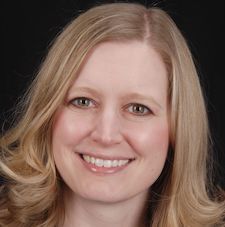Article
The Society for Pediatric Dermatology's 2022 Annual Pre-AAD Meeting
Author(s):
Dr. Elena B. Hawryluk details her pre-AAD session, the variety of conversations being held at the meeting, and how these conversations can inform dermatological research outside of the pediatric field.
Elena B. Hawryluk, MD, PhD

Today, the Society for Pediatric Dermatology celebrates its 34th Annual Pre-American Academy of Dermatology (pre-AAD) Meeting in Boston. The meeting gathers some of the most prominent voices in pediatric dermatology as they speak to recent advancements in the field.
This marks the first in-person pre-AAD meeting since the beginning of the COVID-19 pandemic.
In an interview with HCPLive, Elena B. Hawryluk, MD, PhD, member of The Society for Pediatric Dermatology and Associate Professor of Dermatology from Harvard Medical School, spoke of the conversations that are being held at the meeting and how they can inform dermatological research outside of the pediatric field.
HCPLive: This year marks the Society for Pediatric Dermatology’s 34th Annual Pre-AAD Meeting. Could you speak to the objective of this meeting, its various successes throughout the years, and some of the conversations that will be had this year?
Dr. Hawryluk: We are delighted to return to a live meeting format, the SPD’s first live meeting event since the pandemic! This year we welcome our SPD members to New England with regional experts. The Pre-AAD meeting offers an opportunity to bring our members together and is a popular time to discuss multi-site research and organizational efforts. It also provides a forum for recruitment and engagement of dermatology and pediatric residents and pediatric dermatology fellows. The Pre-AAD meeting allows us to showcase our subspecialty adjacent to the AAD event and expose others to our wonderful field!
HCPLive: You will be leading a session at the meeting on challenging pigmented lesions. What are some of the skin diseases that are associated with these types of lesions, and how do they differ from traditional lesions?
Dr. Hawryluk: In pediatric dermatology we often care for patients with very unusual-appearing skin lesions and face questions of when to biopsy and how to interpret tests for diagnosis that have not been well-characterized for pediatric use. There are also unique lesions with considerations specific to the pediatric population, such as congenital nevi and Spitz nevi, and pediatric specific needs for patients with melanoma.
HCPLive: What are some of the diagnostic challenges of pigmented skin lesions? How do these lesions manifest in pediatric populations and perhaps on skin of color?
Dr. Hawryluk: Childhood is a time that new pigmented lesions arise on the skin, they grow naturally as patients grow. This is important because a new growing lesion would otherwise cause concern for adult patients, so we rely on other clues of evolution! Select patient populations are at risk for melanomas of distinct types; for example, there is an increased appreciation of Spitzoid melanoma in Hispanic patients, and acral melanomas are more common in Asian and African skin vs Caucasian skin, so visits with pediatric dermatology can also involve education on concerning changes to look for.
HCPLive: Broadly speaking, how has pediatric dermatology evolved in recent years? What changes have developed from the conversations taking place at the SPD Pre-AAD Meeting?
Dr. Hawryluk: Pediatric dermatology continues to evolve with growth and attraction of new trainees! The SPD Pre-AAD meeting is a fantastic opportunity to provide exposure, education, and social connection - it is a time when interested trainees connect with new mentors and fellowship directors. Another important evolution is the growth of the Pediatric Dermatology Research Alliance (PeDRA), which has fostered opportunities for collaboration across the country and globe to promote investigation of pediatric skin disease.
HCPLive: In what ways can AAD and other dermatology conferences broaden their reach by including pediatric dermatology studies? How might pediatric dermatology studies evolve in the coming years?
Dr. Hawryluk: Pediatric dermatology has a vital presence at the AAD and other dermatology conferences, as most dermatologists see patients of all ages in their practices! Pediatric dermatology presentations can provide valuable education and management updates on best practices for care of the youngest patients. Pediatric studies will continue to evolve to leverage multi-site larger cohorts and expert consensus, particularly with the efforts of the Pediatric Dermatology Research Alliance (PeDRA). The pediatric dermatology future is bright for promising new medications for eczema, vitiligo, psoriasis, and many skin diseases impacting children.





